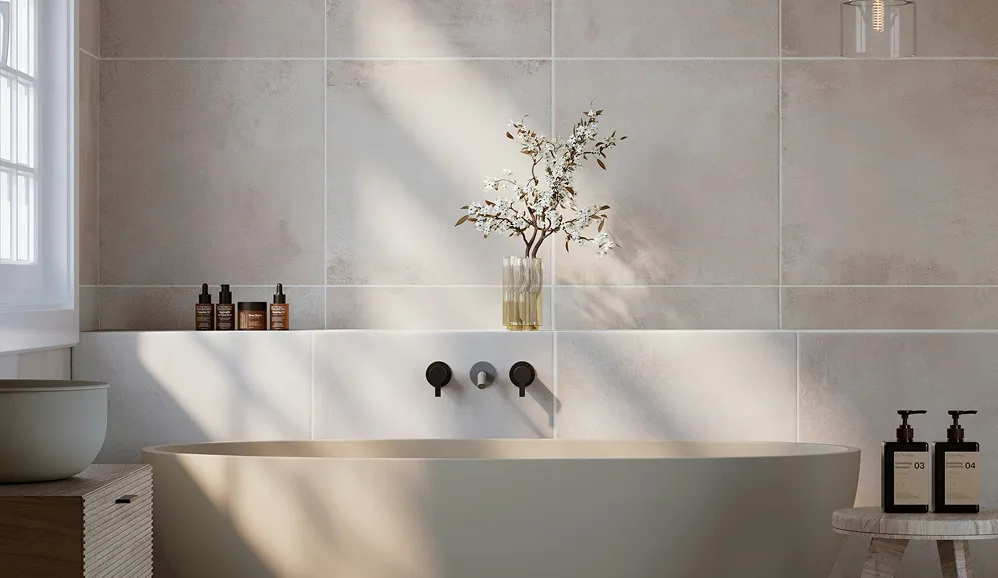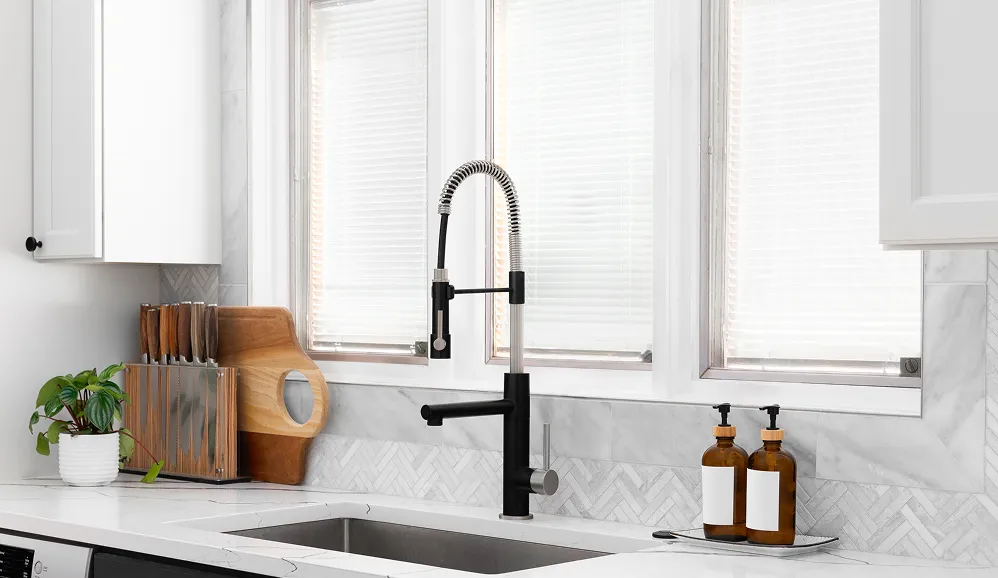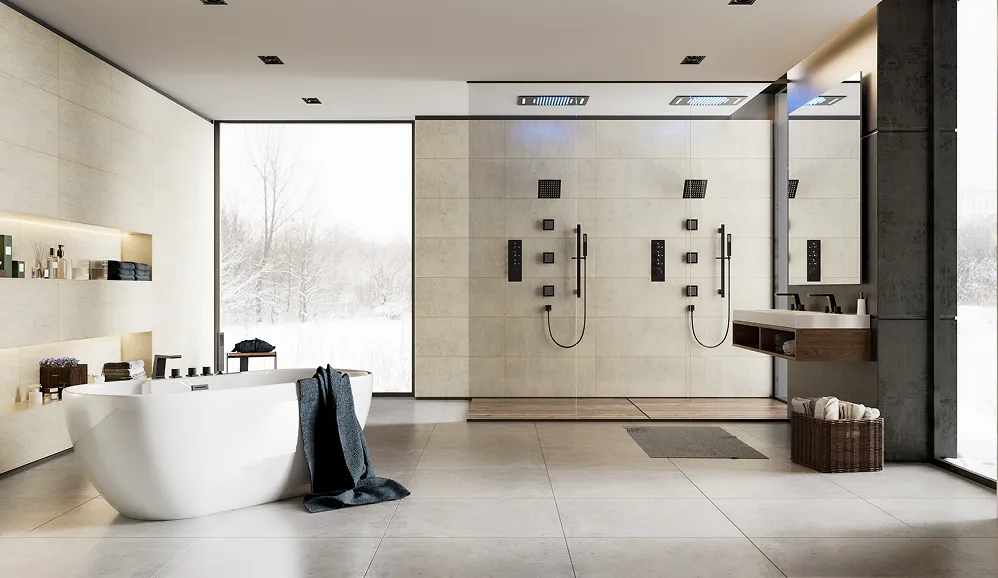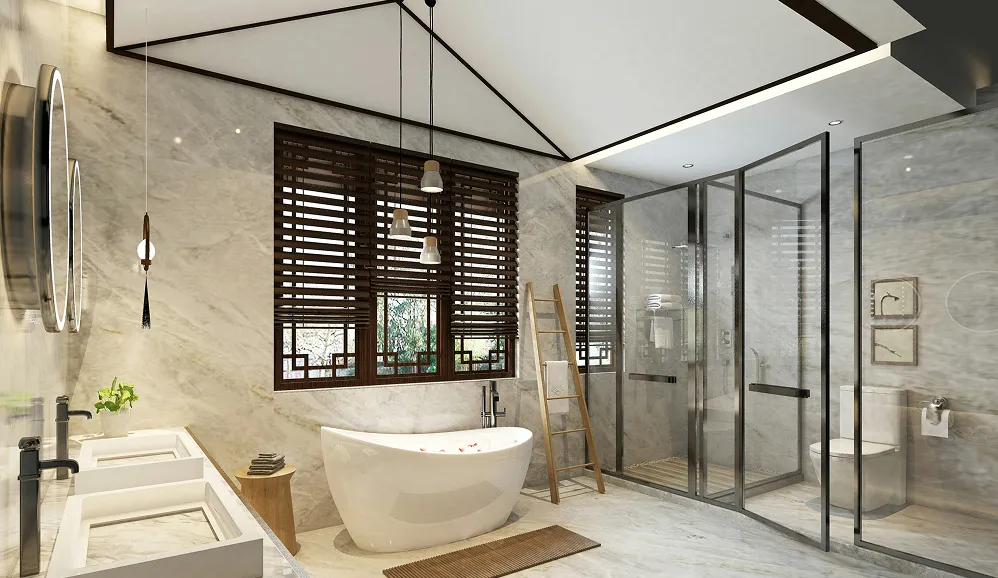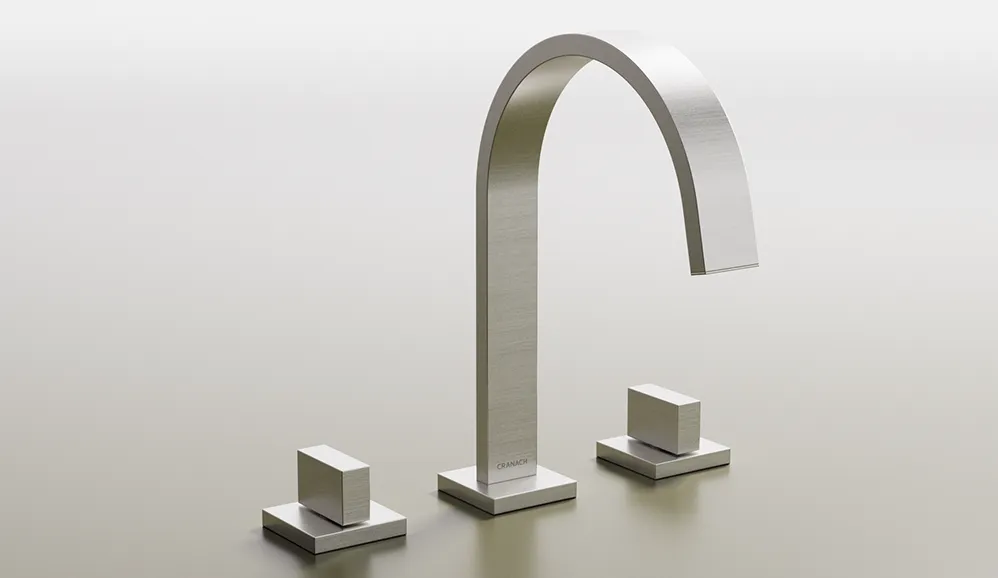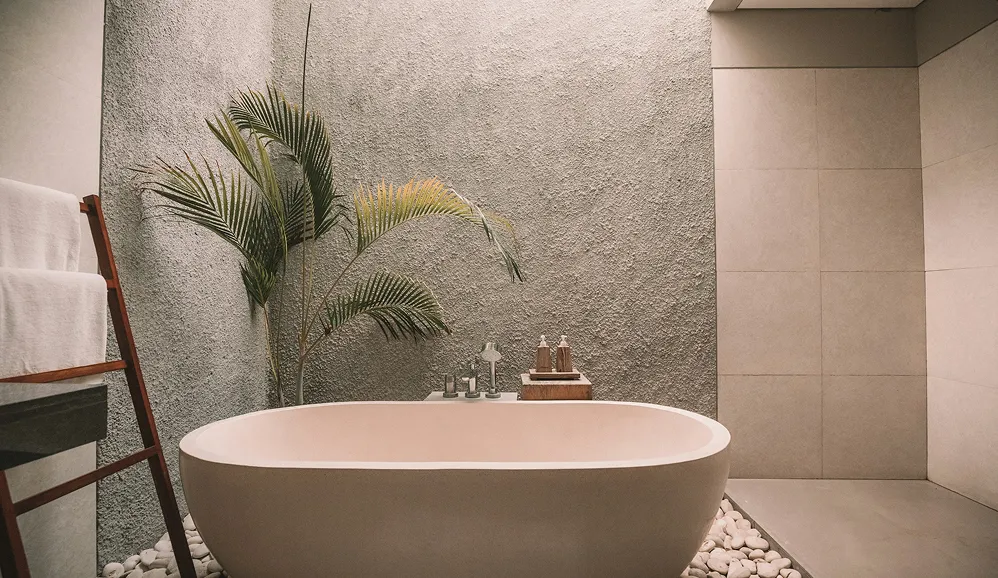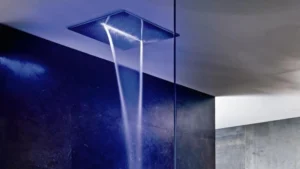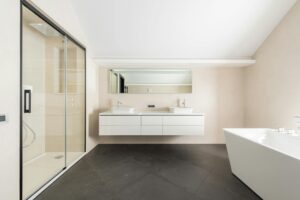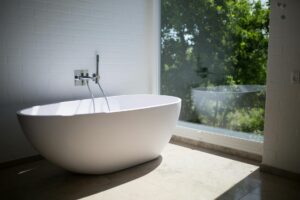Beyond The Price Tag: Decoding Faucet Installation Costs
Replacing a faucet can dramatically improve both the appearance and functionality of your kitchen or bathroom. While that shiny new faucet might be tempting, the actual cost goes beyond the sticker price. Understanding the factors influencing installation costs is essential for homeowners, contractors, interior designers, and anyone involved in remodeling.
From basic plumbing principles to the latest in smart-home technology, faucet installation has changed significantly. What was once a straightforward job now involves a complex set of variables, each affecting the final cost. Effective budgeting considers not just the hardware itself, but also potential difficulties and specialized services.
This article explores the complexities of faucet installation costs, helping you navigate the process confidently and avoid unexpected expenses. We’ll examine seven key factors that determine the overall cost, from the type of faucet you choose to regional labor cost differences, empowering you to create a realistic budget and make informed decisions for your next project.
Faucet Type and Features
The type of faucet you select significantly impacts the installation cost. A basic, single-handle faucet is typically less expensive to install than a more complex model, such as a touchless faucet or one with multiple spray functions. These advanced features often require specialized plumbing knowledge and additional installation time, driving up the cost.
Plumbing System Compatibility
Your existing plumbing system plays a crucial role in determining the installation complexity. If your new faucet doesn’t match your current plumbing setup, modifications might be needed. This could involve replacing valves, pipes, or other components, which adds to both labor and material costs.
Location and Accessibility
The faucet’s location within your home affects the installation process. A faucet tucked away in a tight corner is harder to access and will require more time and effort to install than one in an open, easily accessible area. This increased labor translates to a higher overall cost.
Labor Costs
Labor costs vary depending on your region and the plumber’s experience. In areas with a higher cost of living, expect to pay more for plumbing services. Similarly, a highly experienced plumber with specialized skills will typically charge a higher hourly rate than a less experienced one.
Additional Materials and Services
Sometimes, unforeseen issues arise during installation. These might include corroded pipes, faulty valves, or other unexpected problems. Addressing these issues requires additional materials and labor, increasing the project’s overall cost.
Disposal of Old Faucet
Properly disposing of your old faucet often involves a small fee. This fee covers the plumber’s time and effort to remove and dispose of the old fixture according to local regulations. While it’s a minor expense, it’s worth factoring into your budget.
Permits and Inspections
Depending on local building codes, you might need permits and inspections for your faucet installation. These requirements vary by region and add to the project’s overall cost. Be sure to check with your local authorities to determine the necessary permits and associated fees.
1. Faucet Type and Quality
The first thing impacting your faucet installation cost? The faucet itself. Its type and quality set the price even before plumbing work begins. Options range from basic, budget-friendly models to high-end, smart-technology fixtures. This wide range is reflected in the price. Understanding the nuances of faucet types and quality is key to making smart choices and managing your budget.
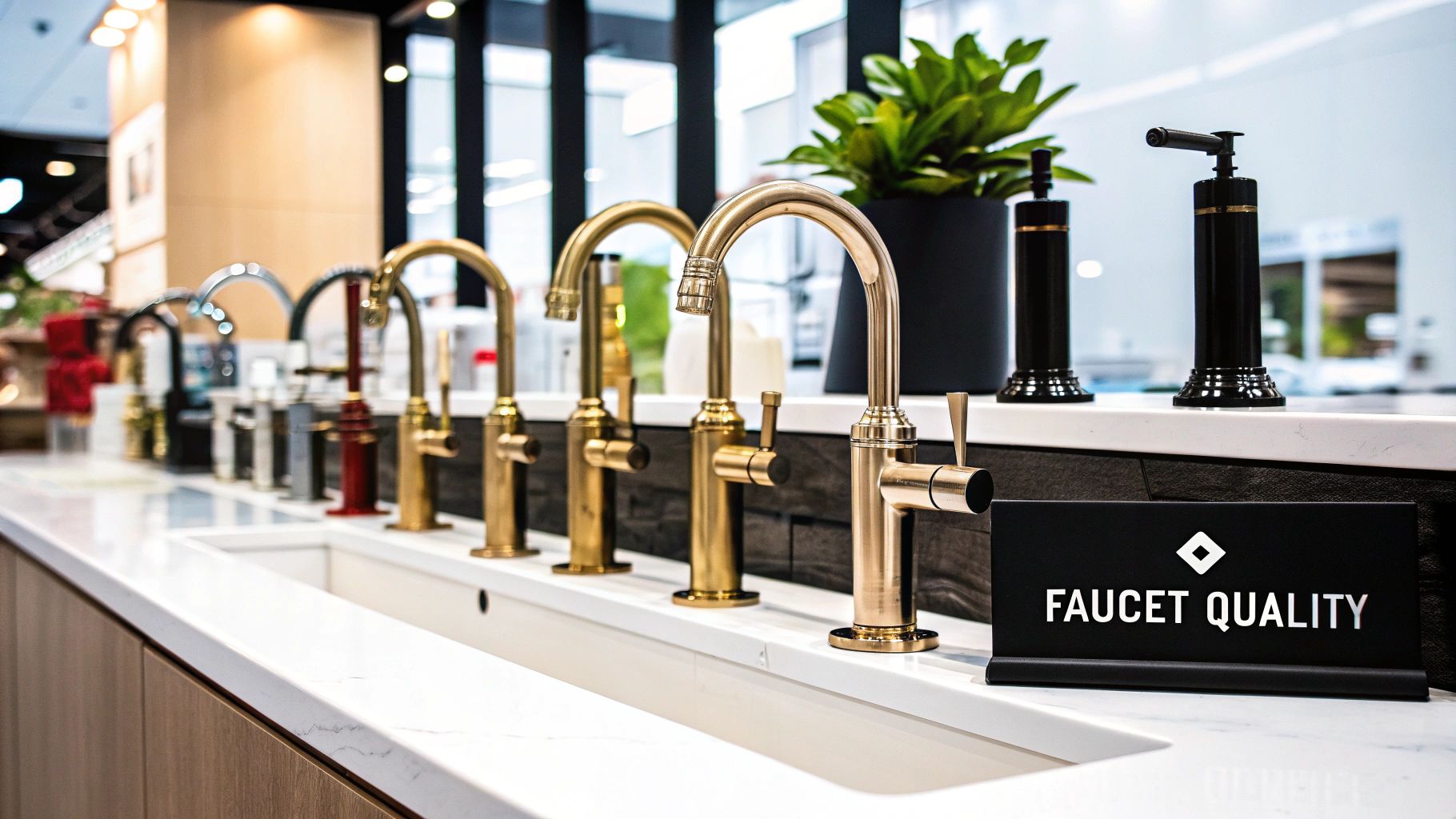
Several factors affect the faucet’s final cost:
- Materials: Common faucet materials include chrome, stainless steel, brass, and bronze. Brass tends to be more durable and expensive than chrome. Solid brass faucets are considered the best, offering longevity and corrosion resistance.
- Finishes: The finish impacts both the look and durability. Choices vary from standard polished or brushed finishes to specialized matte or coated finishes that resist fingerprints and water spots. For more information, check out our guide on Faucet Finishes.
- Features: Think about the configuration (single-handle, double-handle, or touchless), the spray function (pull-down, pull-out, side spray), and extras like water filtration or temperature indicators. Touchless faucets offer convenience, but often come at a higher price.
- Brand Reputation: Well-known brands like Moen, Delta, Kohler, American Standard, Grohe, Cranach, and Pfister often have higher prices because of their reputation for quality, innovation, and customer service.
Pros and Cons of Higher Quality
Investing in a higher-quality faucet has its advantages and disadvantages.
Pros:
- Longevity: They’re built to last, saving you money on replacements down the road.
- Warranty: Premium models usually come with better warranties, offering peace of mind.
- Durability: Better materials resist corrosion, tarnishing, and general wear and tear.
Cons:
- Cost: High-end models can be significantly more expensive, sometimes 5-10 times the price of basic options.
- Specialized Installation: Some complex faucets may require specialized installation, increasing the overall cost.
- Unnecessary Features: Premium features may not be practical for everyone.
Tips for Choosing a Faucet
- Consider Lifetime Value: Think about long-term value and potential cost savings from a durable faucet, not just the initial price.
- Match to Home Ownership: If you plan to sell soon, a basic faucet might be enough. For long-term ownership, a higher-quality model is usually a good investment.
- Look for Sales: Watch for sales and discounts on premium brands.
This is a crucial factor because the faucet is the central part of the installation. Understanding how faucet type, quality, features, and cost relate helps you set a realistic budget and choose a fixture that meets your needs and budget. This informed decision significantly impacts the overall cost and your satisfaction with the project.
2. Labor Costs
Labor costs make up a substantial part of your total faucet installation expenses, often second only to the faucet’s price. Understanding how these costs are broken down and what drives them can help you budget effectively and avoid surprises. Plumbers usually charge by the hour or give a flat rate for the whole installation.
Factors Affecting Labor Costs
Several things can affect the final labor cost:
- Complexity of the Installation: A straightforward faucet swap in an easy-to-reach spot will cost much less than installing a new faucet that needs changes to the current plumbing.
- Accessibility: If the plumbing is hard to get to, the job will take the plumber longer, adding to the labor cost.
- Regional Labor Rates: The cost of living and average wages where you live will heavily influence the hourly or flat rate plumbers charge.
- Installation Time: Most basic faucet installations take 1-3 hours of labor. Remember this when comparing hourly rates. A simple bathroom faucet replacement might require $100-$200 in labor, while a kitchen faucet with garbage disposal reconnection could be $200-$275. Complex custom installations requiring plumbing changes can easily cost $300-$500 or more. Hourly rates typically range from $45-$200 depending on location, and flat-rate services usually fall between $150-$350 for standard faucet installations.
Pros of Professional Installation
- Proper Function and Leak Prevention: A professional plumber knows how to install the faucet correctly, lowering the risk of leaks and ensuring good water pressure and drainage.
- Old Fixture Removal and Disposal: Plumbers will remove and dispose of your old faucet, making things easier for you.
- Workmanship Warranty: Many plumbers offer a warranty on their work, giving you peace of mind.
Cons of Professional Installation
- Cost: Labor can sometimes be more than the faucet itself, especially for complicated installations.
- Price Variations: Finding a reasonably priced plumber can be tough, depending on where you live.
- Emergency/Weekend Rates: Expect to pay much more for emergency services or weekend appointments.
Tips for Managing Labor Costs
- Get Multiple Quotes: Compare prices and services by getting quotes from several plumbers.
- Ask About Disposal Fees: Check if disposal is included in the quote to avoid hidden fees.
- Schedule Off-Peak: You might find a lower rate by scheduling during normal business hours.
- Bundle Jobs: If you need other plumbing work done, combine jobs to possibly lower the overall labor cost. You might be interested in: Our installation sitemap for details on other installation projects.
3. Additional Plumbing Requirements
While the cost of a new faucet itself is pretty straightforward, many homeowners are surprised by the additional plumbing work often needed for proper installation. Understanding these potential extra plumbing needs is crucial for accurate budgeting and avoiding unexpected costs. Replacing a faucet often goes beyond simply swapping out the fixture, and this can significantly impact the total project cost. This is a common source of budget overruns and can make a seemingly simple project much more complex.
Several factors can contribute to these added costs. Outdated or corroded supply lines may need replacing, typically costing $10-30 per line. The installation of new shutoff valves is often recommended for safety and convenience. These valves, ranging from $20-50 each, allow you to isolate the water supply to the faucet without shutting off water to the entire house. More substantial work, like extending or modifying water lines to accommodate a new faucet configuration, can range from $100-300. Finally, adjustments to the drain assembly, costing between $40-150, might be necessary to fit the new fixture.
Features and Benefits of Addressing Additional Plumbing Needs
Here’s a breakdown of the benefits:
- Supply Line Replacement: Modern, flexible supply lines are more reliable and less prone to leaks than older rigid lines.
- Shutoff Valve Installation: Provides easy access for future maintenance and prevents water damage in case of a faucet malfunction.
- Pipe Extensions/Modifications: Allow for greater design flexibility when choosing a new faucet location or style.
- Drain Assembly Adjustments: Ensure proper drainage and prevent leaks.
Weighing the Pros and Cons
Addressing these plumbing needs offers several advantages:
Pros:
- Prevent Future Problems: Addressing underlying plumbing issues during installation avoids costly repairs down the line.
- Improved Reliability: Modern components enhance the overall plumbing system’s performance.
- Enhanced Safety and Convenience: Shutoff valves provide quick control of water flow.
Cons:
- Increased Cost: These additions can sometimes double the initial estimated cost of a simple faucet swap.
- Unforeseen Issues: Opening up walls or accessing existing plumbing can reveal hidden problems requiring further repairs.
- Difficult to Estimate: The full extent of necessary plumbing work may not be apparent until the old fixture is removed.
Real-World Examples of Additional Costs
Here are a few scenarios where extra costs might arise:
- Converting from an 8-inch Spread to a Single-Hole Faucet: This often requires reconfiguring the water supply lines and can add $100-250 to the project.
- Adding Water Hammer Arrestors: These devices prevent noisy pipes and potential damage, adding $50-150 to the bill.
- Extending/Rerouting Water Supply Lines: This is common when relocating a sink or installing a faucet with different connection requirements and can cost $150-300.
Tips for Managing Additional Plumbing Costs
Here’s how to keep costs under control:
- Professional Inspection: Have a qualified plumber inspect the existing plumbing before providing a final quote.
- Proactive Upgrades: Consider upgrading supply lines, even if they aren’t strictly necessary, to prevent future issues.
- Shutoff Valve Priority: Always install or replace shutoff valves during faucet installation.
- Photo Documentation: Take clear photographs of the existing plumbing before seeking quotes to help plumbers assess the situation accurately. You might be interested in: Our Sitemap for more resources.
The rise in popularity of products like SharkBite push-to-connect fittings, BrassCraft supply lines, and Danco plumbing repair parts has made some DIY plumbing tasks more accessible. However, complex plumbing work is best left to professionals. Understanding the potential for additional plumbing requirements will allow you to budget appropriately and avoid unpleasant surprises during your faucet installation project.
4. Sink or Countertop Modifications
Switching out a faucet isn’t always a straightforward swap. Often, the existing sink or countertop requires adjustments to accommodate the new fixture, particularly when changing faucet configurations (e.g., from a three-hole to a single-hole setup). These modifications can significantly impact the overall installation cost and demand careful planning. Adjustments can range from minor fixes like covering old holes to more complex procedures like drilling new ones. Understanding these potential costs and complexities is crucial for budgeting and planning your project.
Modifying your sink or countertop opens a world of faucet possibilities and can dramatically modernize your kitchen or bathroom. Imagine updating a dated bathroom with a sleek vessel sink and a modern single-hole faucet. This necessitates drilling a new hole in the countertop – a modification that adds to the project cost but significantly elevates the entire space. Conversely, simplifying an existing four-hole setup might involve using a deck plate to neatly cover the extra holes, creating a clean, updated look without drilling.
Features like drilling new faucet holes ($100-$300), installing a deck plate or escutcheon ($15-$75), using hole plugs or caps ($5-$30 per hole), and reinforcing the sink or countertop for heavier fixtures ($50-$150) all contribute to the final price. Converting a 4-inch centerset faucet to an 8-inch widespread model typically costs $200-$400, while drilling a single hole in a granite countertop can range from $250-$400. Adding features like a sink-mounted soap dispenser will typically add another $75-$150.
Pros of Sink and Countertop Modifications
- Greater Flexibility in Faucet Selection: You aren’t limited to faucets that match your existing hole configuration.
- Modernized Appearance: Easily update an older sink with a contemporary faucet style.
- Cleaner Aesthetic: Deck plates conceal multiple holes for a streamlined look.
Cons of Sink and Countertop Modifications
- Specialized Tools and Expertise: Drilling into materials like granite, quartz, or solid surface requires specialized tools and expertise.
- Risk of Damage: Incorrect drilling or modifications can damage your countertops.
- Voided Warranties: DIY modifications can void countertop warranties.
The increasing popularity of granite, quartz, and other solid surface countertops has fueled the demand for specialized sink and countertop modifications. These materials require specialized tools and techniques for drilling and cutting, leading to the rise of countertop specialists and fabricators. These professionals have the necessary skills and experience to ensure quality results, though this specialization contributes to the overall cost. Kitchen and bath remodelers also play a key role, often coordinating these modifications as part of larger renovation projects.
Tips for a Smooth Modification Process
- Consider Matching Configurations: Choose a faucet that matches your existing hole configuration to avoid added costs.
- Deck Plates Over Drilling: Opt for deck plates to cover unused holes instead of drilling new ones, especially on expensive countertops.
- Hire Specialists: For high-end countertops, engage experienced countertop specialists instead of general plumbers.
- Match Finishes: Ensure your faucet finish matches any visible hole plugs or deck plates for a cohesive look.
This aspect of faucet installation is crucial because it significantly affects both the cost and the final result. Understanding these potential modifications allows homeowners to make informed decisions, budget appropriately, and achieve the desired aesthetic and functionality for their kitchens and bathrooms.
5. Special Features and Technology
Faucet technology has come a long way. Homeowners now have a wealth of options beyond the basic faucet. While these advancements offer convenience and style, they also affect installation costs. Understanding these features and their cost implications is essential for budgeting and project planning. This section explores the world of high-tech faucets and their influence on installation expenses.
Modern faucets often include features like motion sensors for touchless operation, built-in water filtration systems, digital temperature controls, extendable hoses and spray functions, pot fillers, and even smart home integration. These features enhance convenience and functionality, offering potential water savings with precise controls. They can also contribute to a modern aesthetic, potentially increasing home value. Touchless operation also offers a health benefit by minimizing the spread of germs.
However, these advantages do come at a cost. Higher installation costs are associated with these advanced features. For instance, installing a touchless faucet with the necessary electrical work can add $200-$350 to your bill. Adding an under-sink filtration system can range from $150-$500, while a smart faucet with voice control could add another $250-$400. These features may require electrical outlets near the faucet. More complex systems have more potential failure points and often need specialized maintenance. You might be interested in our guide on Water Flow Rate to understand how these features can affect your home’s plumbing.
Practical Tips for Implementation
- Electrical Availability: Ensure you have electrical outlets near the faucet or factor in the cost of installation.
- Water Pressure Compatibility: Check water pressure compatibility before buying high-tech faucets. Some features require specific pressure levels for optimal performance.
- Battery-Powered Options: If electrical access is difficult or expensive, consider battery-powered options for touchless faucets.
- Smart Home Compatibility: Verify the compatibility of smart features with your existing home automation systems before purchasing.
Understanding these features and their cost impact is crucial for any faucet installation project. By weighing the pros and cons and planning carefully, you can make informed decisions and avoid unexpected expenses while enjoying the benefits of modern faucet technology.
6. Accessibility and Location Challenges
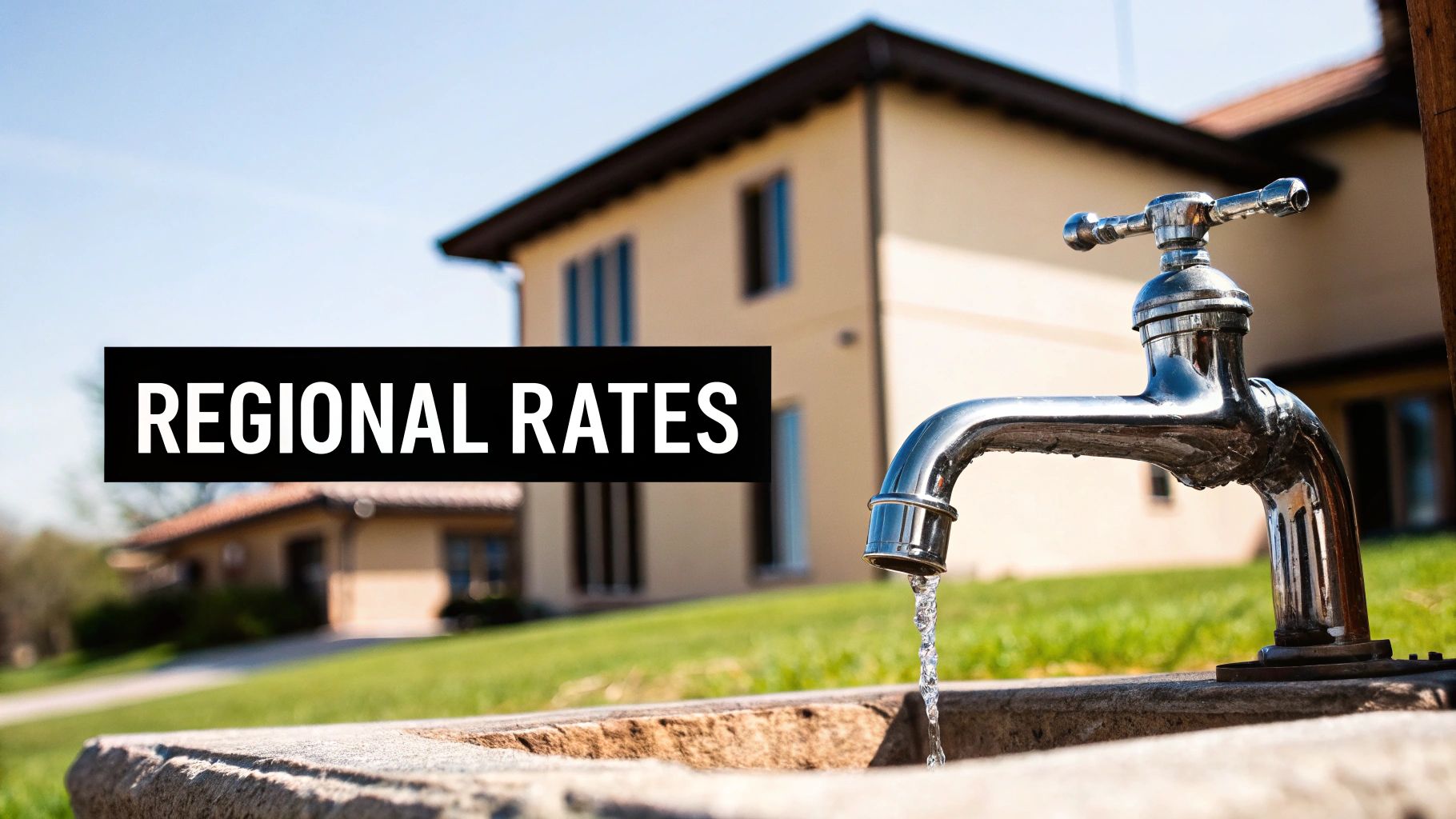
Faucet installation might seem simple enough. However, the accessibility and location of your plumbing can significantly complicate – and increase the cost of – the project. This factor can dramatically impact the overall expense, making it a key consideration. While a standard installation can be straightforward, limited space or awkward angles can turn a small job into a major renovation. Outdated plumbing can also add to the complexity.
Several factors contribute to accessibility challenges. These include cramped spaces, requiring specialized tools like basin wrenches. Brands like Ridgid and Milwaukee are popular manufacturers of these tools. Other challenges include hard-to-reach mounting locations under deep sinks and non-standard pipe sizes or configurations, often found in older homes. Difficult-to-access shutoff valves and installations on upper floors or in remote areas of the house can also add complexity. The growing need for specialized plumbing tools and flexible plumbing solutions reflects the increasing frequency of these challenging installations. You might also be interested in other home improvement articles on our sitemap.
Pros of Addressing Accessibility Challenges
Here are some benefits of tackling these challenges head-on:
- Improved Plumbing Function: Addressing accessibility issues often leads to better water pressure and flow by fixing underlying plumbing problems.
- Easier Future Maintenance: Updating plumbing and installing easily accessible shutoff valves makes future repairs and replacements much simpler.
- Early Identification of Potential Problems: The extensive work involved in challenging installations often reveals other potential plumbing problems, allowing for proactive repairs.
Cons of Accessibility Challenges
While there are advantages to addressing accessibility challenges, there are also drawbacks to consider:
- Increased Labor Costs: Difficult access can increase labor costs by 25-100% or more.
- Potential for Additional Work: The project’s scope – and cost – can increase if cabinets or other fixtures need to be temporarily removed.
- Difficult to Estimate: Getting an accurate estimate can be challenging before a plumber fully assesses the situation.
Real-World Examples
The following examples illustrate how accessibility issues can impact cost:
- Tight Pedestal Sink: Installing a faucet in a tight pedestal sink can add $75-$150 to the cost due to the specialized tools and maneuvering required.
- Corroded Fixtures: Removing corroded fixtures often takes extra time and effort, potentially adding $50-$200 to the bill.
- Cabinet Modifications: If cabinets need modification for plumbing access, expect to pay an additional $100-$300 or more, depending on the work required.
Tips for Managing Accessibility Challenges
Here are some tips to help manage the potential complications and costs:
- Document the Situation: Provide clear photos of the under-sink area to help plumbers provide accurate estimates.
- Prepare the Workspace: Clear out the area under the sink before the plumber arrives to save time and provide easy access.
- Consider Upgrades: Think about replacing difficult-to-access shutoff valves while the plumber is working on the faucet.
- Choose the Right Fixtures: If you have a pedestal sink, consider faucets designed for easier installation in tight spaces.
Understanding the impact of accessibility and location challenges will help you prepare for faucet installation costs and make informed decisions about your plumbing projects.
7. Regional Cost Variations
When budgeting for a faucet installation, understanding regional cost variations is crucial. The price can fluctuate dramatically based on your geographic location. This isn’t random; several factors contribute to these differences, making location a key element in your overall cost calculation. Overlooking this could lead to significant budget overruns or unrealistic expectations.
Factors Driving Regional Price Differences:
- Labor Rates: Plumber labor rates are influenced by local economic conditions and cost of living. Metropolitan areas with higher living expenses typically have higher labor rates than rural areas. This can account for a 20-50% difference in the overall installation cost.
- Building Codes & Plumbing Standards: Different regions have unique building codes and plumbing standards. Some areas, particularly those focused on water conservation, may require specialized fixtures and installation methods, adding to the complexity and cost.
- Permit Requirements: Permitting fees vary widely, ranging from a nominal $50 to upwards of $500. These costs are unavoidable and must be factored into your budget.
- Union vs. Non-Union Labor: The prevalence of unionized labor in a region can impact pricing. Unionized plumbers often command higher wages and benefits, influencing the overall cost of their services.
- Seasonal Pricing Fluctuations: In some markets, plumbing services experience seasonal demand. Emergency plumbing repairs are more common during harsh winters, potentially leading to higher prices. The off-season may present opportunities for lower rates.
Real-World Examples
Here’s a look at some cost examples:
- High-Cost Metropolitan Area (e.g., New York City): Expect to pay between $350 and $600 for a standard faucet installation.
- Mid-Range Suburban Area (e.g., Midwest Suburbs): Costs typically fall between $200 and $400.
- Rural Area: Installations in less populated areas might range from $150 to $300.
- Specialized Regional Requirements: Expect a price range of $300 to $500.
Pros and Cons of Regional Variations
Pros:
- Specialized Expertise: Higher-cost areas often have more experienced and specialized installers.
- Quality Assurance: Stricter building codes in some regions generally lead to higher-quality installations.
- Competitive Markets: Competitive markets, even high-cost ones, can offer more service guarantees and options.
Cons:
- Price Disparities: The same installation can cost significantly more in a high-cost area.
- Accessibility: Finding qualified installers may be more challenging in rural locations.
- Administrative Burden: Permitting processes add time and administrative costs.
Resources and Information
The awareness of regional cost variations has grown due to resources like regional plumbing associations, local building departments, online cost guides, and industry publications (such as Remodeling Magazine’s Cost vs. Value Report). These resources provide data-driven insights into regional pricing trends, empowering consumers to make informed decisions.
Practical Tips
- Research Local Rates: Use online resources and contact local plumbers to get a sense of typical rates in your area.
- Inquire About Permits: Ask about required permits and associated costs before scheduling any work.
- Compare Quotes: In high-cost areas, compare quotes from independent plumbers and larger companies to find the best value.
- Consider Timing: If your market has seasonal pricing, consider scheduling your installation during the off-season.
By understanding how regional factors influence faucet installation costs, you can accurately budget your project and avoid unexpected expenses. This knowledge empowers you to navigate the complexities of hiring a plumber and ensures you receive a fair price for quality work.
7-Point Faucet Installation Cost Comparison
| Cost Factor | 🔄 Implementation Complexity | ⚡ Resource Requirements | 📊 Expected Outcomes | 💡 Ideal Use Cases | ⭐ Key Advantages |
|---|---|---|---|---|---|
| Faucet Type and Quality | Varies from simple to specialized installation | Basic to premium materials and hardware options | Durable performance with possible warranties | Standard to designer homes | Long-lasting quality and diverse design choices |
| Labor Costs | Moderate; varies with hourly or flat-rate setups | Professional plumbing expertise with standard equipment | Reliable installation with minimized leak risks | Residential replacements and standard installations | Ensured functionality and proper fixture disposal |
| Additional Plumbing Requirements | Higher due to modifications (supply lines, valves, etc.) | Extra materials and specialized plumbing tools | Updated plumbing that prevents future issues | Renovations or upgrades in older installations | Increased safety and improved component modernity |
| Sink or Countertop Modifications | Moderate to high; may require drilling and reinforcement | Tools for drilling and finishing, potential countertop repair | Seamless fixture integration with enhanced aesthetics | Remodeling projects with configuration changes | Flexible faucet options and modernized appearance |
| Special Features and Technology | High; involves electronics and smart integrations | Specialized components, additional wiring or electrical work | Advanced functionality with potential home automation | Tech-savvy installations and premium project enhancements | Modern conveniences and enhanced performance |
| Accessibility and Location Challenges | High; extra effort in cramped or non-standard spaces | Specialized tools and increased labor for hard-to-reach areas | Optimal performance in challenging installation scenarios | Older homes or areas with limited space | Improved access and easier future maintenance |
| Regional Cost Variations | Moderate; complexity influenced by local codes and permits | Adjusted labor rates, permit fees, and regional standards | Compliant installations with region-specific quality | Areas with diverse cost-of-living demands | Tailored solutions meeting local regulations and standards |
Ready to Upgrade Your Faucets?
Understanding the factors that influence faucet installation costs empowers you to make informed decisions and budget effectively. From the faucet type and its inherent quality to the installation’s complexity, several key elements contribute to the overall expense. Labor costs, for instance, can fluctuate significantly based on the plumber’s experience and your location.
Additional plumbing requirements also play a role. Sink modifications, the need for new shut-off valves, or the installation of special features like water filtration systems can all add to the final bill. Don’t forget to consider potential accessibility challenges, such as tight spaces under the sink, which can increase labor time. Regional cost variations can also have a significant impact.
Planning Your Faucet Upgrade
Applying these concepts involves careful planning and research. Start by determining the type of faucet that best suits your needs and aesthetic preferences. Are you drawn to a classic two-handle design, a sleek single-handle model, or a modern touchless faucet? Research different brands and models to understand their features, quality, and price points.
Obtaining multiple quotes from reputable plumbers is essential. Ensure they provide a detailed breakdown of their estimated costs, including labor, materials, and any potential additional charges. HomeAdvisor can be a valuable resource for finding qualified plumbers in your area. Clearly communicate your project scope and any special requirements upfront to avoid misunderstandings and unexpected expenses.
Inspecting your existing plumbing beforehand can help identify potential issues. Look for signs of corrosion, leaks, or outdated valves. Addressing these issues proactively can prevent costly surprises during the installation process. This pre-emptive check can also help you have a more accurate conversation with potential plumbers.
Adapting to Unforeseen Circumstances
Plumbing projects can sometimes reveal hidden problems, like corroded pipes or outdated valves. Be prepared to adjust your budget and timeline if necessary, and maintain open communication with your contractor. Flexibility is key in managing these unexpected situations.
Staying informed about current plumbing trends and technological advancements, like smart faucets, can also help you make cost-effective and future-proof choices. Understanding the benefits and installation requirements of smart faucets can help you assess their long-term value and potential cost savings.
Key Takeaways:
- Faucet type and quality significantly influence the initial cost.
- Labor costs can vary greatly; get multiple quotes.
- Factor in potential additional expenses like plumbing modifications.
- Regional variations and accessibility challenges can impact the overall cost.
- Planning and communication are crucial for staying within budget.
Ready to transform your kitchen or bathroom with stylish, high-quality faucets? Cranach bath and kitchen offers a stunning selection of faucets designed for both form and function. Explore our diverse range of bathroom and kitchen faucets crafted to elevate your space. Visit Cranach bath and kitchen today and discover the perfect faucet to complement your style and budget.

